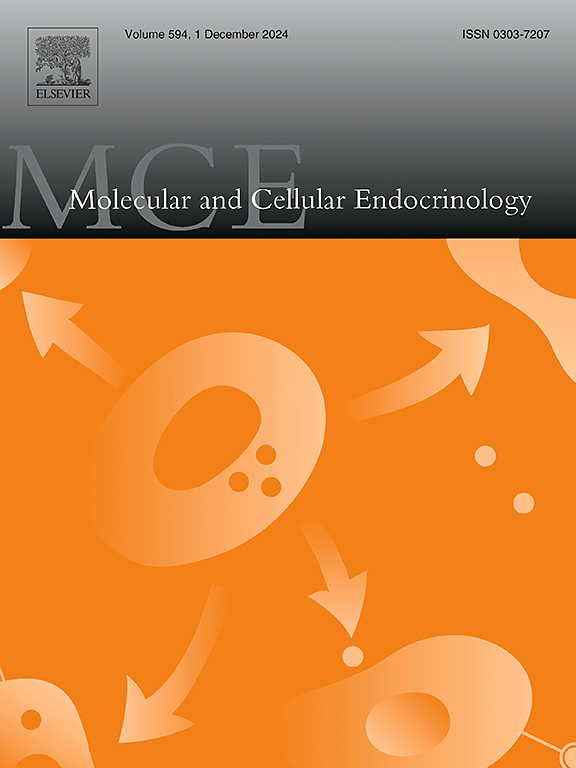The N-terminal region of HASPIN regulates phosphorylation of AURKA and meiotic progression in spermatocytes
IF 3.6
3区 医学
Q2 CELL BIOLOGY
引用次数: 0
Abstract
Protein phosphorylation is an important post-translational modification that plays a critical regulatory role in meiosis. HASPIN, a kinase highly conserved from yeast to mammals, is required for male fertility. In this study, we found that the intrinsically disordered N-terminal domain of HASPIN is also required for this function. Mice with deletion of N-terminal amino acids (aa) 1-243 of HASPIN exhibited reduced testicular size, sperm count, and fertility. Using immunoprecipitation-mass spectrometry and phosphoproteomics analysis, we found that HASPIN could interact with AURKA and regulate its phosphorylation at T279 via its N-terminus. Taken together, our results suggest that the N-terminus of HASPIN regulates AURKA kinase activity to affect male fertility.
HASPIN的n端区域调节AURKA的磷酸化和精母细胞的减数分裂进程
蛋白磷酸化是一个重要的翻译后修饰,在减数分裂中起着关键的调节作用。HASPIN是一种从酵母到哺乳动物都高度保守的激酶,是男性生育所必需的。在本研究中,我们发现HASPIN的内在无序n端结构域也是该功能所必需的。缺失HASPIN n端氨基酸(aa) 1-243的小鼠睾丸大小、精子数量和生育能力均下降。通过免疫沉淀-质谱和磷酸化蛋白质组学分析,我们发现HASPIN可以与AURKA相互作用,并通过其n端调控其T279位点的磷酸化。综上所述,我们的研究结果表明,HASPIN的n端调控AURKA激酶活性,影响男性生育能力。
本文章由计算机程序翻译,如有差异,请以英文原文为准。
求助全文
约1分钟内获得全文
求助全文
来源期刊

Molecular and Cellular Endocrinology
医学-内分泌学与代谢
CiteScore
9.00
自引率
2.40%
发文量
174
审稿时长
42 days
期刊介绍:
Molecular and Cellular Endocrinology was established in 1974 to meet the demand for integrated publication on all aspects related to the genetic and biochemical effects, synthesis and secretions of extracellular signals (hormones, neurotransmitters, etc.) and to the understanding of cellular regulatory mechanisms involved in hormonal control.
 求助内容:
求助内容: 应助结果提醒方式:
应助结果提醒方式:


